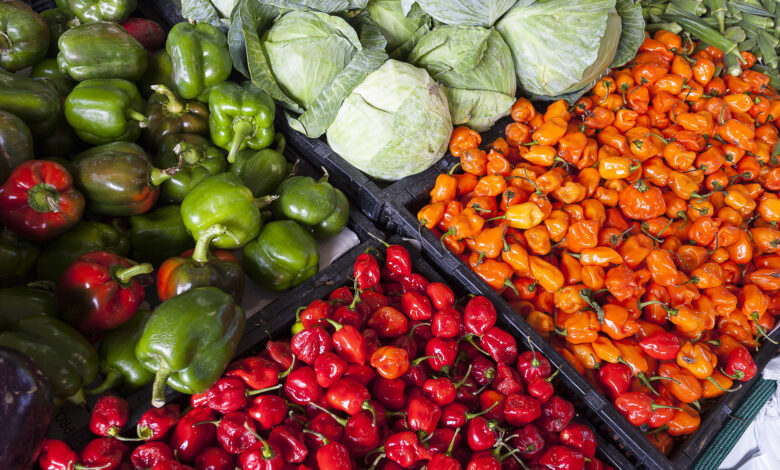Agriculture Marketing: An Overview

Agriculture marketing refers to the process of buying, selling, and transporting agricultural products from farmers to consumers. It involves a series of activities that are aimed at bringing agricultural products to the market, establishing prices, and facilitating the transfer of ownership. Agriculture marketing is essential for the sustainability of the agricultural sector, as it helps to create value for farmers, processors, and consumers.
Importance of Agriculture Marketing
Agriculture marketing is crucial for the growth and development of the agricultural sector. It helps to increase the income of farmers, enhance the availability of food, and promote economic growth. Agriculture marketing provides farmers with access to markets, information, and technologies that enable them to produce more efficiently and sustainably. The marketing process also helps to reduce the risks associated with farming by providing farmers with a predictable and stable source of income.
In addition, agriculture marketing plays an important role in ensuring food security. It helps to distribute food products from areas of surplus to areas of scarcity, thereby ensuring that everyone has access to food. Agriculture marketing also helps to promote the consumption of nutritious and healthy foods by making them available and affordable to consumers.
Challenges Facing Agriculture Marketing
Despite its importance, agriculture marketing faces several challenges. One of the main challenges is the lack of infrastructure and resources. Many rural areas lack basic infrastructure such as roads, storage facilities, and refrigeration units, which makes it difficult to transport and store agricultural products. This results in post-harvest losses, which can be as high as 40% in some cases.
Another challenge facing agriculture marketing is the lack of information and knowledge. Farmers often lack information about market demand, prices, and marketing opportunities. This makes it difficult for them to make informed decisions about what to produce and when to sell. Lack of knowledge about best practices in production, post-harvest handling, and marketing also limits the ability of farmers to produce high-quality products that meet market standards.
In addition, agriculture marketing is often affected by policy and regulatory issues. Government policies can impact the price and availability of agricultural products, and can also influence the competitiveness of the agricultural sector. Regulatory issues such as food safety and quality standards, labeling requirements, and export regulations can also pose challenges for farmers and processors.
Strategies for Improving Agriculture Marketing
To overcome the challenges facing agriculture marketing, several strategies can be implemented. These include:
Investing in Infrastructure
Investing in infrastructure such as roads, storage facilities, and refrigeration units can help to improve the transportation and storage of agricultural products. This can help to reduce post-harvest losses and increase the availability of products in the market.
Providing Information and Knowledge
Providing farmers with information about market demand, prices, and marketing opportunities can help them to make informed decisions about what to produce and when to sell. This can help to increase their income and reduce the risks associated with farming. Providing knowledge about best practices in production, post-harvest handling, and marketing can also help to improve the quality of products and make them more competitive in the market.
Creating Linkages and Networks
Creating linkages and networks between farmers, processors, traders, and consumers can help to improve the marketing of agricultural products. This can help to increase market access, reduce transaction costs, and improve the flow of information and knowledge. It can also help to build trust and relationships between different actors in the market.
Improving Policy and Regulatory Environment
Improving the policy and regulatory environment can help to create an enabling environment for agriculture marketing. This can include policies that support infrastructure development, market information systems, and access to credit. It can also include regulatory frameworks that promote food safety and quality, and facilitate trade.
Marketing Channels for Agricultural Products
Agricultural products can be marketed through different channels, depending on the type of product, market demand, and distribution network. Some common marketing channels for agricultural products include:
Direct Marketing
Direct marketing involves selling products directly to consumers or retailers without the use of intermediaries. This can include farmers’ markets, community-supported agriculture (CSA), and online sales platforms. Direct marketing can provide farmers with higher prices and better control over the marketing process, but it requires more time and effort to build relationships with customers and establish marketing channels.
Wholesale Markets
Wholesale markets are large-scale markets that connect farmers with buyers such as processors, wholesalers, and retailers. These markets can be physical or virtual, and can be operated by the government or private sector. Wholesale markets can provide farmers with access to a larger market and better prices, but they also involve higher transaction costs and may require compliance with quality and safety standards.
Processing and Value-Adding
Processing and value-adding involve transforming agricultural products into processed or semi-processed products such as flour, oil, or cheese. This can add value to the products and allow farmers to access higher-value markets. However, processing and value-adding also require investment in equipment, technology, and knowledge.
Contract Farming
Contract farming involves agreements between farmers and buyers such as processors or exporters, where farmers agree to produce a specific crop or product according to certain quality and quantity standards. Contract farming can provide farmers with a guaranteed market and stable prices, but it can also involve risks such as price volatility and dependence on the buyer.
Cooperatives
Cooperatives are organizations that are owned and operated by farmers or other producers, who come together to market their products collectively. Cooperatives can provide farmers with access to larger markets, better prices, and reduced transaction costs. They can also provide farmers with access to knowledge and resources that they may not have on their own.
Marketing Strategies for Different Agricultural Products
Different agricultural products require different marketing strategies depending on their characteristics, market demand, and competition. Some examples of marketing strategies for different agricultural products include:
Grains and Cereals
Grains and cereals such as wheat, rice, and maize are widely traded commodities that require a well-developed marketing system. Marketing strategies for grains and cereals may involve using futures markets, developing commodity exchanges, and establishing quality and safety standards. Grain and cereal farmers may also consider value-adding by producing flour, pasta, or breakfast cereals.
Fruits and Vegetables
Fruits and vegetables are perishable products that require careful handling and transport. Marketing strategies for fruits and vegetables may involve using cold chains, developing packaging and labeling standards, and establishing direct marketing channels such as farmers’ markets and CSAs. Fruits and vegetable farmers may also consider value-adding by producing juices, jams, or dried fruits.
Livestock
Livestock products such as meat, milk, and eggs are highly regulated and require compliance with food safety and animal welfare standards. Marketing strategies for livestock may involve developing traceability systems, establishing contract farming arrangements, and using branding and labeling to differentiate products. Livestock farmers may also consider value-adding by producing processed meat products or cheese.
Organic and Specialty Products
Organic and specialty products such as coffee, tea, and spices require certification and compliance with specific production standards. Marketing strategies for organic and specialty products may involve developing certification systems, establishing niche markets, and using storytelling and branding to differentiate products. Organic and specialty farmers may also consider value-adding by producing artisanal products or offering agritourism experiences.
Conclusion
Agriculture marketing is a critical component of the agricultural sector, as it helps to create value for farmers, processors, and consumers. However, agriculture marketing faces several challenges, including lack of infrastructure, information, and regulatory frameworks. To overcome these challenges, strategies such as investing in agricultural research and development, promoting public-private partnerships, and developing market information systems are necessary. By implementing effective marketing strategies and building strong marketing channels, farmers can access larger markets, increase their incomes, and contribute to the development of the agriculture sector.
In addition, it is important to consider the sustainability of agriculture marketing practices. Sustainable agriculture marketing practices take into account social, economic, and environmental factors, and aim to ensure that the benefits of agriculture are shared by all stakeholders. This includes promoting fair trade, supporting small-scale farmers, and minimizing negative environmental impacts.
Overall, agriculture marketing is a complex and multifaceted process that requires careful consideration of market demand, product characteristics, and distribution networks. By understanding the different marketing channels and strategies available, farmers can make informed decisions that enable them to thrive in a competitive marketplace.



